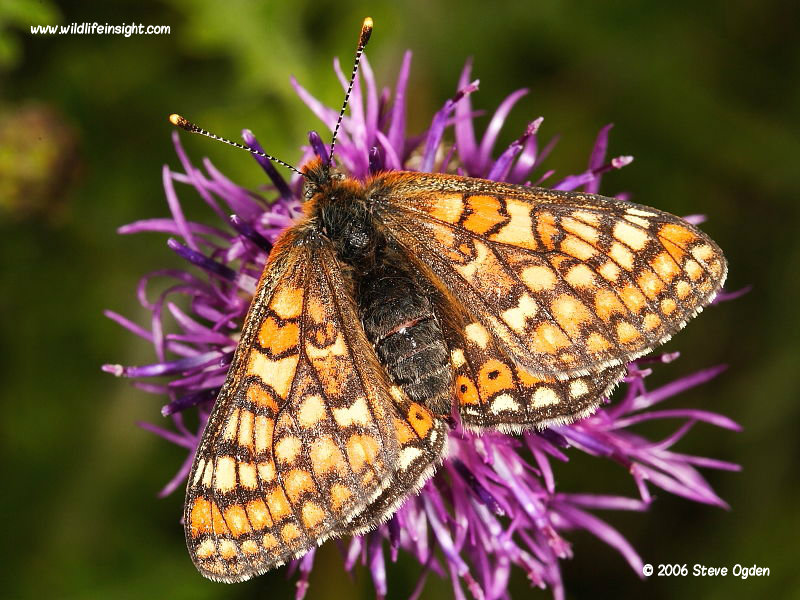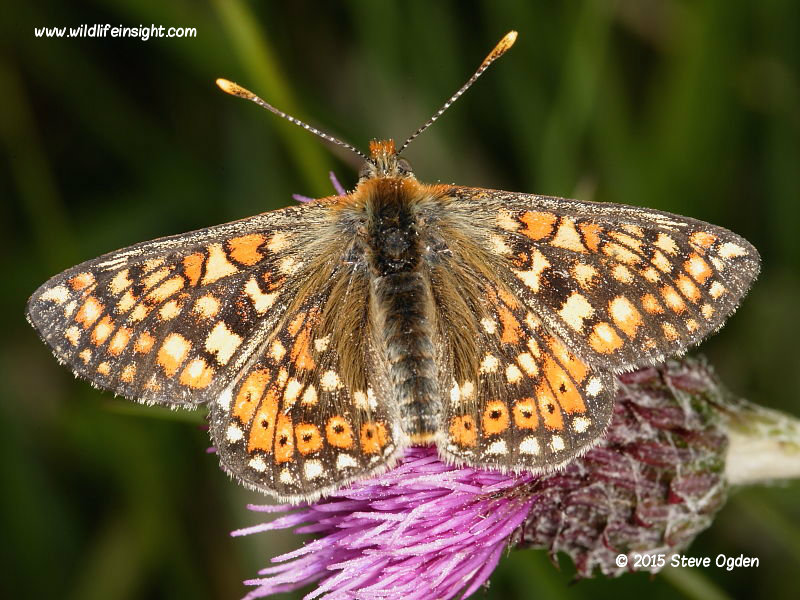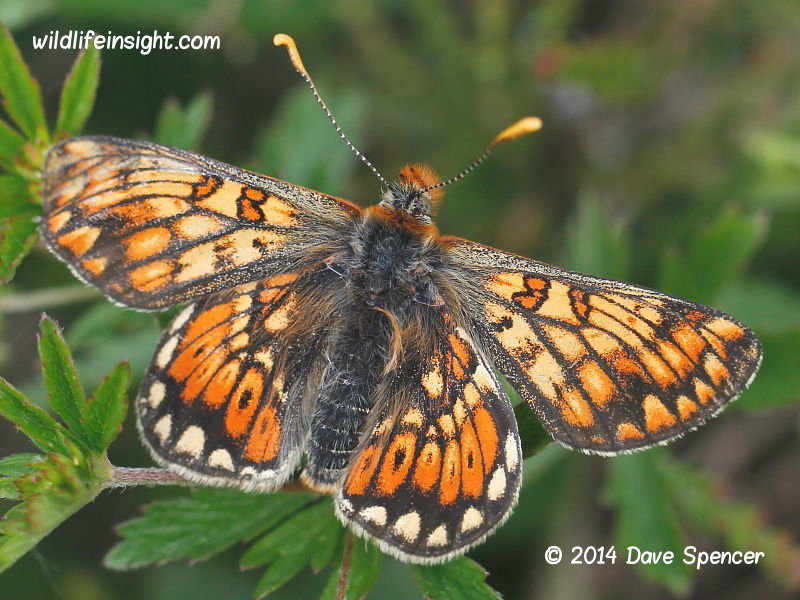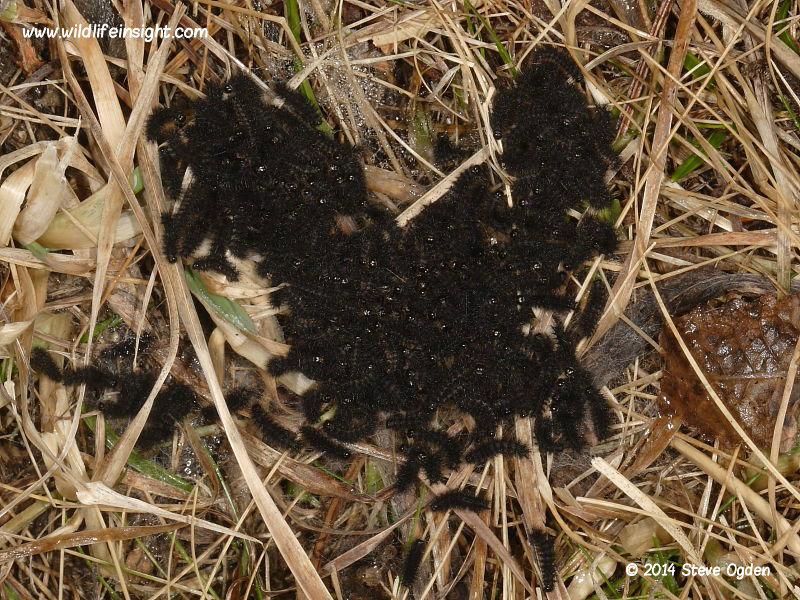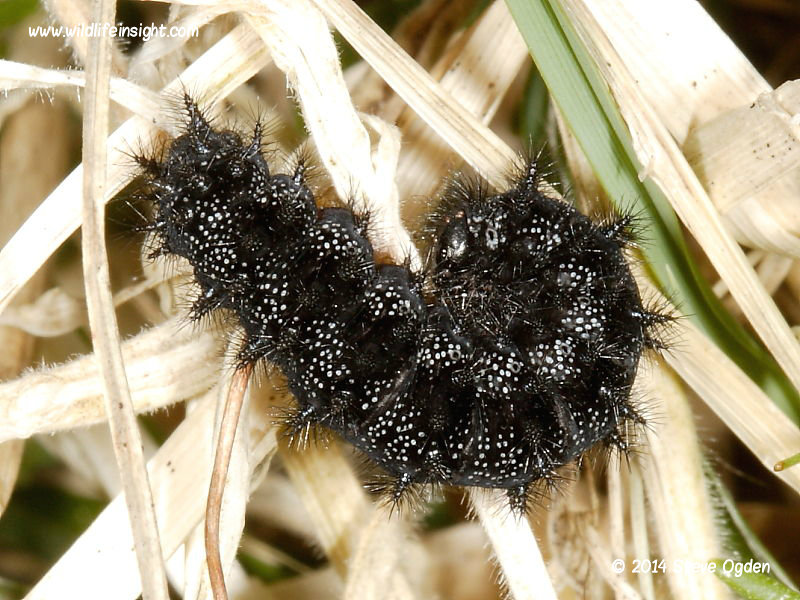The Marsh Fritillary butterfly (Euphydryas aurinia)
The Marsh Fritillary Butterfly is distributed throughout much of Europe
In the British Isles and many parts of Europe the loss of habitat in recent years has seen a major decline in numbers.
In the UK the butterfly’s main populations are becoming fragmented and now largely restricted to the south west of England and Wales, with the main northern populations in the Lake District and Argyllshire in Scotland.
Largest populations exist in damp areas where Devil’s-bit Scabious, the main larval foodplant, is plentiful.
The butterfly flies in a single generation between late April/early May to early July when it can often be found nectaring on the purple flower heads of thistles and knapweed.
British Butterfly caterpillar gallery
British Moth caterpillar gallery
Identification of the Marsh Fritillary butterfly
The Marsh Fritillary is a distinctive species and readily identified from other fritillary butterflies in the British Isles.
The wingspan is c40 mm with forewings and hindwings having contrasting small blocks of orange and pale yellowy/orange blocks bordered by dark brown veins.
Females are generally slightly larger than males. The butterfly is also known as the Greasy Fritillary reflecting its greasy appearance when worn.
Various aberrations/forms/sub species have been recorded in different regions of mainland Europe.
In the UK aberrations also occur such as the one featured photographed by Dave Spencer on a clifftop site on the Lizard Peninsular in South West Cornwall.
Other similar sized Fritillary butterflies appear in the British Butterfly galleries and include the Small Pearl-bordered, Pearl-bordered, Heath and Glanville Fritillary.
Larger Fritillary butterflies are the Dark Green, Silver-washed and the increasingly scarce High Brown.
Marsh Fritillary butterfly life cycle
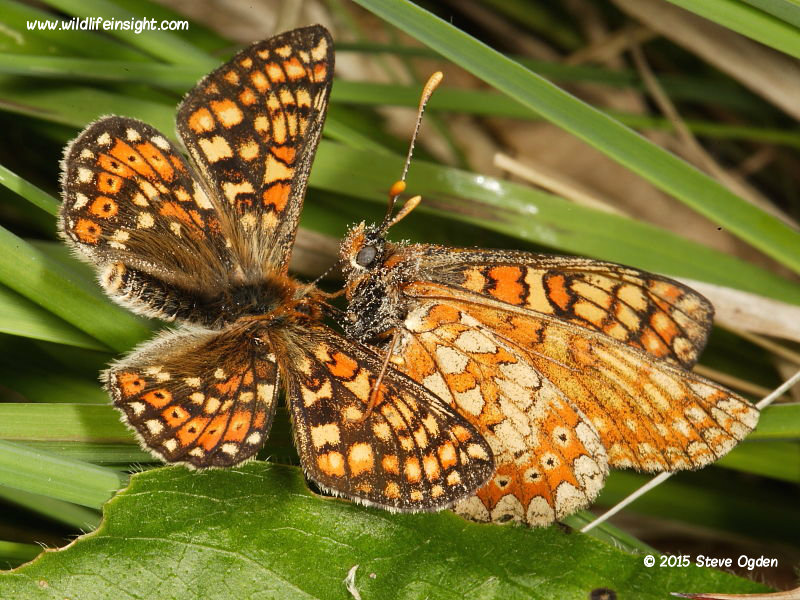
First butterflies are normally seen in early May.
The eggs are a pale yellow when laid and darken within a few days.
Clusters of several hundred eggs are laid on the underside of the larval foodplants leaves.
Marsh Fritillary caterpillar foodplants
The caterpillar foodplant is almost exclusively Devil’s-bit Scabious, Succisa pratensis, in the British Isles.
In Europe other scabious species, plantains and honeysuckles are recorded as being host plants.
In warm weather eggs hatch within 3 weeks, with the hatching caterpillars living gregariously within a silken web.
Hatching catepillars are a little over 1mm long, a pale/yellowish brown, with fine hairs and a black head.
Following the first moult the larvae are brown with spines and a black head.
Marsh Fritillary caterpillar (Euphydryas aurinia)
When still small, length 6-8 mm, the light brown caterpillars overwinter in a hibernaculum below the surface vegetation.
Other butterfly caterpillars can be seen in the butterfly caterpillar gallery and species pages.
Moth caterpillars can be seen in the moth caterpillar gallery pages and species pages.
Following a moult into a third instar during hibernation the caterpillars are black with white speckling and become active in early spring.
Those featured were seen on the 18th February at a coastal site on the Lizard Peninsular, Cornwall.
On this occasion the larvae at first remained hidden beneath the dead grasses in the overcast, cool conditions but within an hour of the sun breaking through, a dozen or more little, black mounds of hundreds of larvae were basking on the surface.
In the final instar the caterpillars, c30 mm in length, black with white freckling, disperse from the web. Most are fully grown by mid May and can often be found wandering close by in search of a pupation site.
In some years the caterpillars are heavily predated by Apanteles species of parasitoid wasps.
Any caterpillars found wandering late in the season are likely to have been parasitized.
Marsh Fritillary butterfly chrysalis
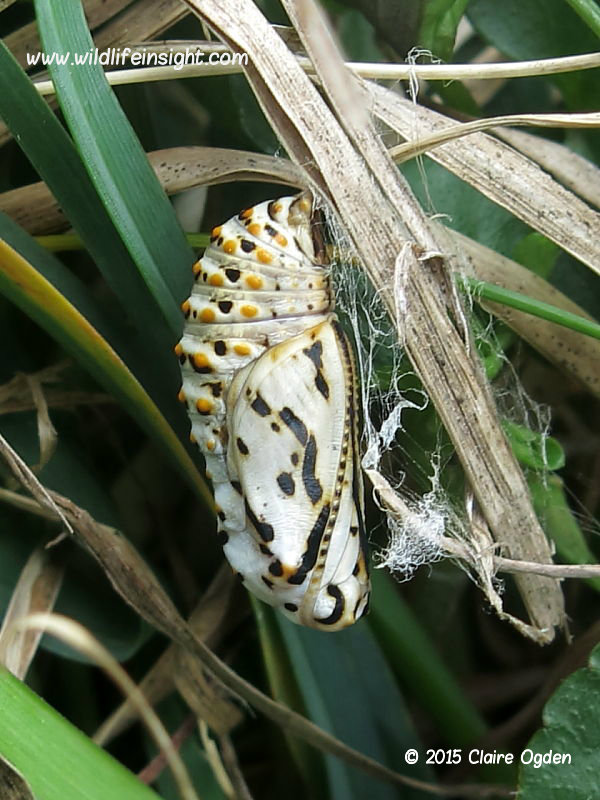
The chrysalis hangs down from tail hooks secured to a silken pad on a stem or leaf low down amongst the vegetation.
The chysalis featured was formed amongst grasses close to Devil’s-bit Scabious plants.
The butterfly emerges within 10-20 days.
Recommended reference books
A Cornwall Butterfly Atlas- John Watcher, John Worth &Adrian Spalding. A complete guide to British Butterflies-Margaret Brooks and Charles Knight. Collins Complete Guide to European Butterfly Guide -Tom Tolman & Richard Lewington.
